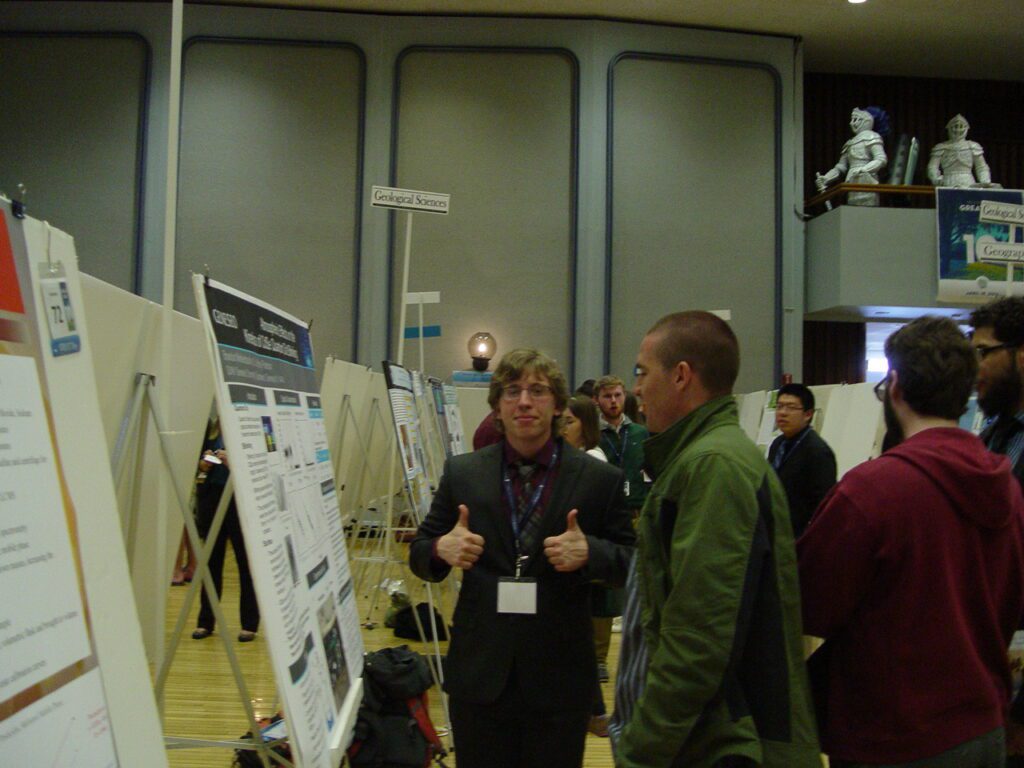Faculty Research
Student Research Opportunities
The hands-on research for undergraduates that is available here in the SUNY Geneseo Chemistry Department is often only offered at the graduate level at other institutions.
- Gain experience that may be useful to you in graduate school, medical school or your career
- Receive course credit
- Participate in original research
- Gain valuable skills in laboratory protocols
- Form a professional relationship with faculty
Opportunities for student stipends for undergraduate research during the summer are available. Students regularly present their research at local, regional, and national conferences.
If you are considering undergraduate research, then speak to professors who you think might be interesting in working for. You should try to arrange all research opportunities well in advance of the semester in which you wish to do research.

Faculty and their Research Interests
Alam, Rabeka
Designing advanced Perovskite nano-particles.
Boiani, James
My research work focuses on Separation Science, primarily the application of HPLC and Capillary Electrophoresis to the analysis of environmentally or medically important compounds. We develop different sample preparation procedures and analysis conditions to increase the efficiency of these analyses. Efficient analysis methods contribute to effective studies of the health and environmental benefits of the compounds. Recently we have focused on trans-Resveratrol in red wines and aspartame in beverages and foods. We also work on new methods of detection for HPLC and CE. More information about James Boiani’s research.
Helms, Eric
Work in our lab is focuses on Anaphalis margaritacea, also known as Pearly Everlasting. This hardy plant grows in a variety of habitats throughout North America and has been used in many different ways. The flowers and leaves of Anaphalis margaritacea have been used by several Native American groups for respiratory illnesses, rheumatism, gastrointestinal ailments, and as a general analgesic. The roots have been used by the Haudenosaunee as a treatment for dysentery. It is the roots and a chlorinated polyacetylene found in them that has attracted our attention. Active projects in our lab include chemical synthesis of the compound, extraction of the compound from its natural source, exploring more efficient ways of purifying the compound from the extract, structure refinement of the compound, and eventual testing of the compound for biological activity. From the biosynthetic perspective, we are in the process of identifying the genes encoding the halogenation enzymes, sequencing them, and eventually expressing the proteins that they encode to allow mechanistic exploration. More information about Eric Helms’ research.
Other areas of interest are the development of new, discovery-based organic chemistry laboratory exercises that incorporate molecular modeling with laboratory experience and nuclear magnetic resonance spectroscopy.
Johnson, David
My research is directed at developing drug therapies to prevent atherosclerosis and diabetic retinopathy via NADPH oxidase inhibition. Cell and tissue damage caused by free radicals, called reactive oxygen species, is believed to be an initiating event in these diseases and the enzyme NADPH oxidase has been identified as a major source of reactive oxygen species in vascular tissue. As a result, we are exploring the use of small molecule inhibitors of NADPH oxidase to prevent these diseases.
McKnight, Ruel: The McKnight research group is currently involved in the study of novel drug molecules (mainly threading intercalators) binding to DNA using spectrophotometric, calorimetric and electrophoretic gel-based techniques. The long term goal is to develop a fundamental understanding of drug-DNA interactions and to use this knowledge as a guide to rationally design less toxic therapeutic drugs.
Peterson, Jeffrey
Research in the Peterson group is focused in the areas of materials chemistry and nanoscience and centers on two main goals: (1) the synthesis of novel semiconductor nanostructures and (2) the development of a full understanding of their optical and electronic properties through various spectroscopic techniques. The group has a special interest in semiconductor quantum dots (QDs), inorganic particles 10,000x smaller than the width of a human hair that possess unique optical properties and that have applications in renewable energy and biological imaging. As an example of the group’s central research theme, one current project synthesizes lead selenide QDs of various shapes and sizes and then investigates how shape impacts QD’s optical properties using absorption spectroscopy. More information about Jeffrey Peterson’s research.
Wendy Pogozelski
I have three projects in my lab. First, I study the effects of ionizing radiation (gamma rays and x rays) on the DNA of human cells. Currently, we are looking at changes in the DNA in the mitochondria using a technique called real-time PCR. Secondly, we are comparing the mitochondrial DNA of several different species of mice. Third, we are trying to use DNA to solve mathematical problems. In other words, we are using DNA as a biomolecular computer to store and retrieve information and perform searches. More information about Wendy Pogozelski’s research.
Yokoyama, Kazushige
Conjugation of amyloid beta protein on gold nano colloidal particles’ surface “Encapsulation of gold colloid in a silica sol-gel matrix”. More information about Kazushige Yokoyama’s research.
